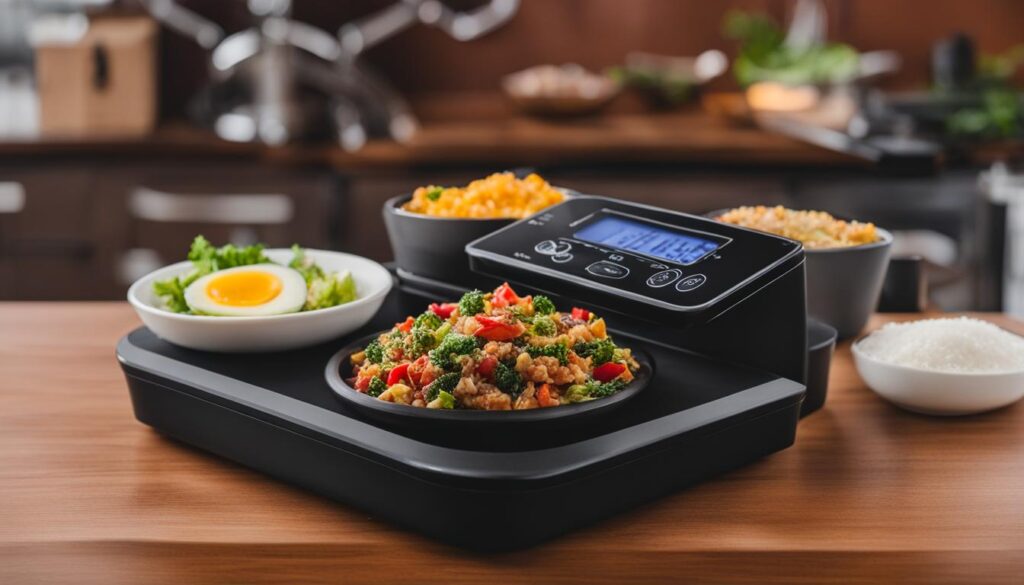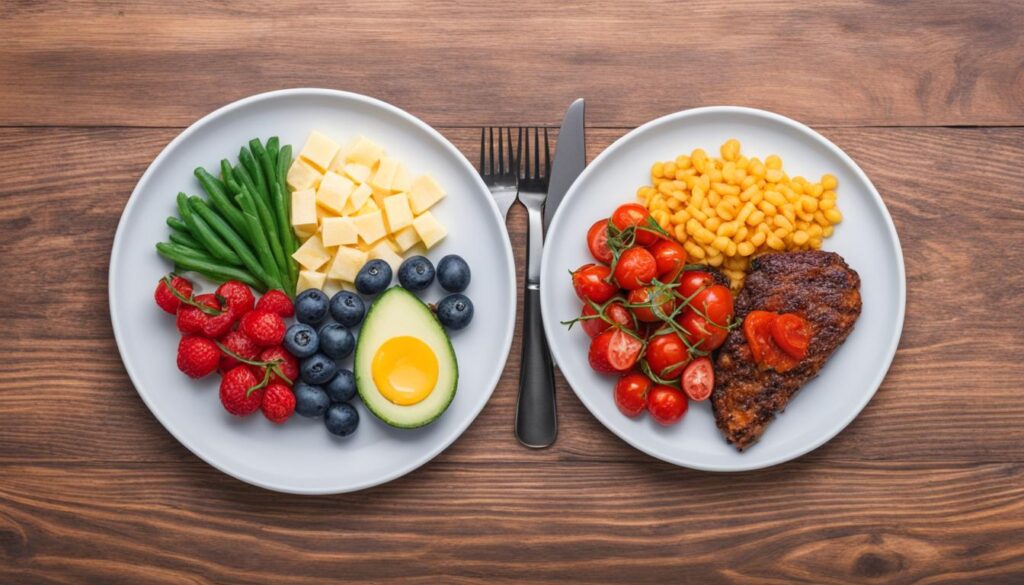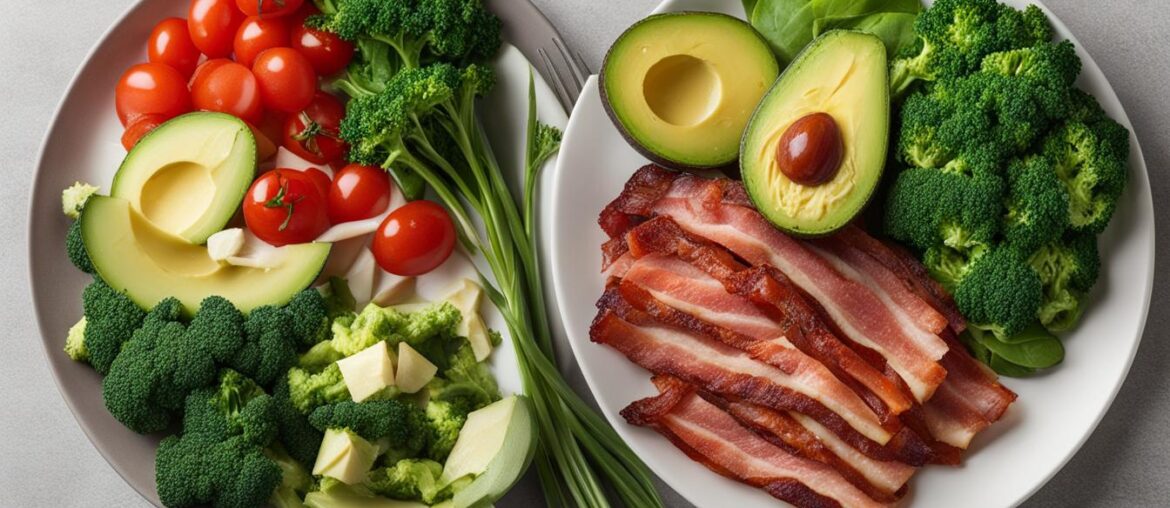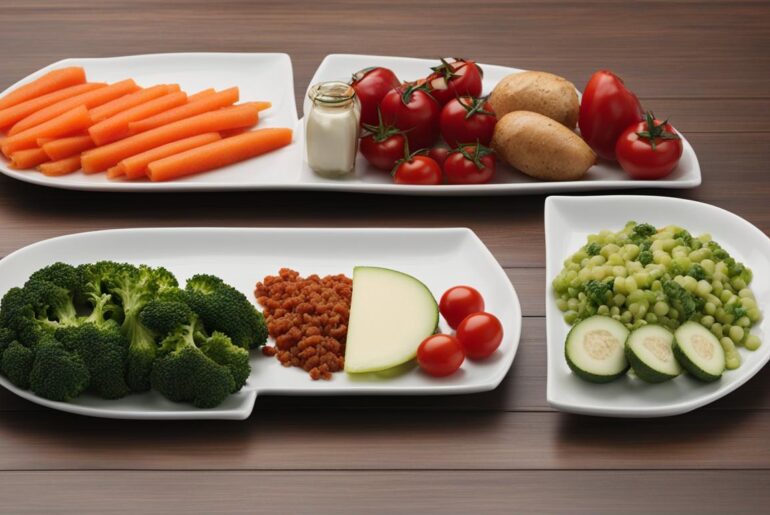When it comes to the ketogenic diet, portion control is often overlooked, with many people assuming they can eat as much as they want. However, this misconception can hinder their progress and prevent them from achieving the desired results. Understanding the importance of portion control and implementing effective strategies can make all the difference in the success of a keto journey.
Portion control plays a crucial role in preventing weight loss plateaus and ensuring optimal health on the ketogenic diet. By managing portion sizes and achieving the recommended macro ratios for fats, proteins, and carbohydrates, individuals can maintain ketosis and maximize their weight loss efforts (check out my post on managing portion sizes here).
Key Takeaways:
- Portion control is essential for success on the ketogenic diet.
- Managing portion sizes helps to prevent weight loss plateaus.
- Achieving proper macro ratios is crucial for maintaining ketosis.
- Implementing effective portion control strategies is key to optimizing results on the keto diet (see my post here).
- Understanding the significance of portion control can lead to better overall health on keto.
The Role of Portion Control in Keto
Portion control is essential on the ketogenic diet to maintain ketosis, promote weight loss, and ensure overall health. The keto diet emphasizes high-fat intake, but this does not mean unlimited consumption. Restricting carbohydrates and managing portion sizes of fats, proteins, and carbohydrates is crucial for achieving and sustaining ketosis.
By understanding the importance of portion control in keto and implementing effective strategies, individuals can optimize their weight loss and health outcomes on the diet. Proper portion control helps individuals stay within their desired macro ratios and caloric intake, enabling them to reach their goals more efficiently.
One of the key benefits of portion control on keto is the promotion of ketosis (check this post out). When portion sizes of carbohydrates are limited, the body depletes its glycogen stores and starts using stored fat for energy. This metabolic state, known as ketosis, is the primary goal of the ketogenic diet. By effectively managing portion sizes, individuals can maintain this fat-burning state and maximize their weight loss potential.
Paying attention to portion control also helps in managing overall calorie intake, which is crucial for weight loss on the ketogenic diet. Despite the allowance for higher fat consumption, consuming excess calories will hinder progress. By measuring and controlling portion sizes, individuals can create a calorie deficit, leading to weight loss and improved body composition.
Furthermore, portion control on keto allows for better management of macronutrients. While fats are heavily emphasized in the ketogenic diet, it’s important to consume adequate amounts of proteins and limit carbohydrates. Proper portion control ensures that the diet remains well-balanced, providing essential nutrients and preventing nutrient deficiencies.
Implementing portion control strategies also encourages mindful eating and awareness of hunger and fullness cues. By slowing down and savoring each bite, individuals can avoid overeating and make more conscious food choices. This can contribute to a healthier relationship with food and long-term success on the ketogenic diet.
In summary, portion control plays a vital role in the success of the ketogenic diet. By managing portion sizes of fats, proteins, and carbohydrates, individuals can maintain ketosis, promote weight loss, and achieve overall health improvement. Implementing effective portion control strategies, such as measuring food and practicing mindful eating, can optimize results on the keto diet and lead to long-term success.
Tips for Effective Portion Control on Keto

Implementing effective portion control strategies is key for achieving successful weight loss on the ketogenic diet. Here are some tips to help you manage your portion sizes and optimize your results:
- Use visual cues: Utilize measuring cups and food scales to accurately measure and portion out your foods. This can help you maintain the recommended macro ratios for fats, proteins, and carbohydrates.
- Be mindful of hunger and fullness cues: Pay attention to your body’s signals of hunger and fullness. Practice mindful eating by savoring each bite and eating slowly. This can prevent overeating and ensure that you consume an appropriate amount of food.
- Pre-measure servings: Pre-portion your meals and snacks in advance to avoid mindlessly eating larger portions. This can help you stay on track with your calorie and macro goals.
- Use smaller plates: Opt for smaller plate sizes to visually trick your brain into thinking you are eating a larger portion. This can help you feel satisfied with less food.
- Stay hydrated with water: Drink an adequate amount of water throughout the day. Not only will this keep you hydrated, but it can also help you feel fuller and curb cravings.
By implementing these tips, you can effectively manage your portion sizes, avoid overeating, and achieve the desired weight loss results on the keto diet. Remember, portion control is key to maintaining ketosis and optimizing your overall health on the keto diet.
Importance of Measuring Food on Keto
When following a ketogenic diet, measuring food is crucial for effective portion control and maintaining ketosis. While it may seem tedious, accurately measuring the amount of food you consume allows you to track your intake and ensure you are following the appropriate portion sizes of fats, proteins, and carbohydrates.
Measuring cups, food scales, and other portion control tools are valuable assets in achieving precise measurements. These tools provide you with better control over your portion sizes, enabling you to optimize your macro ratios and achieve your weight loss and health goals on the keto diet.
By measuring your food on keto, you can avoid unintentional overeating and maintain the right balance of nutrients. It also helps you stay on track with your daily caloric intake, ensuring you create the necessary calorie deficit for weight loss.
Take the time to measure your food accurately, paying attention to serving sizes and recommended guidelines. This level of precision will contribute significantly to your overall success on the ketogenic diet.
Remember, each meal is an opportunity to nourish your body and reach your desired ketosis state. Embrace the importance of measuring your food on the keto diet, as it ultimately empowers you to manage your portion sizes effectively and aligns you with your weight loss and health objectives.
“By measuring food on keto, individuals can have better control over their portion sizes, optimize their macro ratios, and achieve their weight loss and health goals on the diet.”
The Benefits of Portion Control on Keto

Implementing portion control on the ketogenic diet offers several benefits, including weight loss and overall health improvement. By controlling portion sizes, individuals can create a calorie deficit, which is critical for weight loss.
Portion control prevents overeating and helps individuals stay within their recommended macro ratios. This promotes ketosis, the metabolic state in which the body burns fat for energy.
In addition to weight loss, portion control on keto can improve blood sugar control, heart health, and overall well-being. By practicing effective portion control, individuals can experience the full benefits of the ketogenic diet.
| Benefits of Portion Control on Keto |
|---|
| Promotes weight loss |
| Aids in maintaining recommended macro ratios |
| Supports ketosis and fat burning |
| Improves blood sugar control |
| Enhances heart health |
| Boosts overall well-being |
Conclusion
Portion control is a crucial component of success on the ketogenic diet. It plays a significant role in maintaining ketosis, promoting weight loss, and achieving overall health improvement. By implementing effective portion control strategies, individuals can optimize their portion sizes and attain their desired weight loss and health goals on the keto diet.
Measuring food, using visual cues, and practicing mindful eating are essential tips for ensuring effective portion control on keto. By measuring food, individuals can accurately track their intake and maintain the appropriate portion sizes of fats, proteins, and carbohydrates. Visual cues like measuring cups and food scales provide the necessary tools for accurate portion control. Additionally, being mindful of hunger and fullness cues and listening to your body’s signals can help prevent overeating and manage portion sizes effectively.
It is important to note that portion control is not about restricting oneself but rather finding the right balance and ensuring proper nutrient intake. By practicing mindful portion control, individuals can enjoy the benefits of the ketogenic diet and achieve long-term success. These benefits include maintaining ketosis, promoting weight loss, improving blood sugar control, supporting heart health, and overall well-being.
Whether you’re a beginner or a long-time follower of the keto diet, incorporating portion control into your routine is essential. By adopting effective portion control strategies and making them a habit, you can optimize your portion sizes, achieve your desired weight loss goals, and experience the full benefits of the ketogenic lifestyle.




